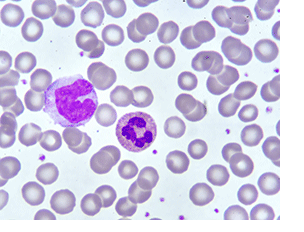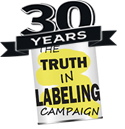RISK

Free glutamate and Cancer
When acid hydrolysis is used to free amino acids from protein, the impurities produced include carcinogenic mono and dichloro propanols. Reaction flavors produced through a maillard reaction may contain carcinogenic heterocyclic amines.Methods for producing free glutamate
Glutamic acid (glutamate) as it exists in its unadulterated form in nature, is an acidic amino acid that will be found in abundance in both plant and animal protein where it is tied to other amino acids in long chains.Processed free glutamic acid is different. Used in food, dietary supplements, cosmetics, pharmaceuticals, and vaccines, it is produced commercially in manufacturing and/or chemical plants, and/or by fermentation. The glutamate in plant and animal protein is L-glutamate only. The glutamate in manufactured free glutamate contains D-glutamate as well as L-glutamate.
There are six basic methods for producing free glutamate. Glutamate can be freed from protein through autolysis, acid hydrolysis, enzymolysis (hydrolysis using enzymes), and/or fermentation of protein (2-4). Glutamate can also be produced by combining specific amino acids, reducing sugars, animal or vegetable fats or oils, and optional ingredients including hydrolyzed vegetable protein (5,13). Its products are often referred to as "processed flavors" or "reaction flavors."
These first five methods for producing free glutamate all produce glutamic acid in combination with other amino acids. Processed free glutamic acid can also be produced as a single amino acid using bacterial fermentation, a process whereby carefully selected genetically modified bacteria secrete free glutamic acid through their cell walls (6).
Today, this method of bacterial fermentation is used to produce much, if not all, of the free glutamic acid used by the pharmaceutical industry. It is also used to produce the food ingredient monosodium glutamate.
Unavoidable impurities
All processed free glutamic acid, no matter how produced, is accompanied by unwanted by-products of production referred to as impurities. Impurities are invariably produced by all methods used for breaking down protein (autolysis, enzymolysis, and acid hydrolysis) (4, 8-12), by all methods used to produce monosodium glutamate (7), and by all methods used to produce reaction or processed flavors (5,13).Carcinogenic mono and dichloro propanols and heterocyclic amines
When acid hydrolysis is used to free amino acids from protein, the impurities produced include carcinogenic mono and dichloro propanols (4,12). Reaction flavors produced through a maillard reaction may contain carcinogenic heterocyclic amines (13).For information about carcinogenic propanols access:
The National Toxicology Program (NTP) of the National Institute of Environmental Health Sciences (NIEHS) at the National Institutes of Health (NIH) Review of Toxicological Literature, and The Codex Alimentarius Commission Position Paper on Chloropropanols.
References
2. Maloney D. Yeasts. In: Kirk RE, Othmer DF, Kroschwitz JI, Howe-Grant M. Kirk-Othmer Encyclopedia of Chemical Technology, Vol. 25. New York: Wiley, 1992: 785-788.
3. Ajinomoto Co., Inc.Monosodium Glutamate (MSG). In: Hui YH, ed. Encyclopedia of food science and technology, Vol 3. New York: Wiley, 1991: 1833-1836.
4. Pommer K. New Proteoloytic enzymes for the production of savory ingredients. Cereal Foods World.1995;40(10):745-748.
5. Lin LJ. Regulatory status of maillard reactions flavors, Washington DC: Division of Food and Color Additives, Center for Food Safety and Applied Nutrition, Food and Drug Administration. Paper presented at a meeting of the American Chemical Society, August 24, 1992.
6. Leung A, Foster S. Encyclopedia of Common Natural Ingredients Used in Food, Drugs, and Cosmetics. New York: Wiley, 1996: 373-375.
7. Deki M, Echizen A, Temma T. Minor components in monosodium glutamate. Kanzei Chuo Bunsekishoho.1977;17:59-62.
8. Man EH, Bada JL. Dietary D-Amino Acids. Ann Rev Nutr.1987;7:209-225.
9. Konno R, Oowada T, Ozaki A, Iida T, Niwa A, Yasumura Y, Mizutani T. Origin of D-alanine present in urine of mutant mice lacking D-amino-acid oxidase activity. Am J Physiol. 1993;265:G699-G703.
10. Sjostrom LB. Flavor potentiators. In: Furia TE, CRC Handbook of Food Additives. Cleveland: CRC Press, 1972: 513-521.
11. Rundlett KL, Armstrong DW. Evaluation of free D-glutamate in processed foods. Chirality. 1994;6:277-282.
12. Food Chemical News, Dec 2, 1996. p24-25.
13. Food Chemical News, May 31, 1993. p16.

